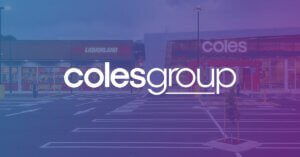How to Choose the Best KPIs for Your Personalization Campaign
By Kate Orchard
March 6, 2020
Share
You’re testing, personalizing, and testing your personalization campaigns. And, your personalization campaigns have gotten more and more creative. But in order to get the big impact you’re looking for, you need to make sure you’re measuring the right KPIs. As an optimization consultant, I help a lot of brands get the most out of every campaign they run. One of the biggest challenges I see brands face is choosing what to measure when they set up these A/B tests. I wrote a blog a while back about choosing the right KPIs for A/B testing. In this blog, I’ll walk through how to choose the best KPIs for Personalization Campaigns.
Know The Reason for Personalizing an Experience and Plan Your KPIs Accordingly
We are all for personalization at SiteSpect — you can see huge returns by providing your customers a more relevant experience. But, the flip side to this is that you don’t want to personalize without knowing what you’re looking to achieve. Usually, this leads to the mistake of measuring too general of a KPI. For example, if your key personalization metric is something like “conversions,” you’ll end up missing out on crucial data that will inform your growth. For example, say you’re personalizing your product pages to cater to users based on location by featuring sandals for users in the southwest, and boots for users in the northeast. Of course, you want to know whether these personalized pages lead to more end conversions, but you also probably want to know how many relevant items make it into each cart, what the average order value of that cart is, and perhaps how many searches each user performs, how far they scroll down the page, and what they click on along their journey.
Don’t Be Limited By the Most Attractive KPI
Now, let’s say you’re A/B testing variations of the navigation bar on your homepage, personalizing the experience based on the user’s previous site activity. You may be focused on users getting from their personal navigation to the products page. But, if that’s all you measure you lose sight of other ways that users interact with that feature. Often, one change will have unintended results in seemingly unrelated areas, so be sure to include enough metrics to tell the whole story. For instance in this example, you may also want to measure KPIs on the other pages users land on, how long they spend on the navigation bar, what the bounce rate is for pages they do land on, and how long they spend on their secondary page.
Think Backwards To Determine Important Metrics
The best strategy and most universal rule of thumb for determining good KPIs is to think backwards and look at the whole journey a customer would take with your feature. When you personalize a key part of your digital experience, what is the specific goal of that change? Do you want more users to add items to their carts? Do you want users to spend longer looking at certain pages on your site? It’s crucial to zoom out and measure performance by actions beyond conversion or purchase. But, you also need to make sure that you measure equivalent actions between the control and each personalized variation. If you can only trigger your KPI in one experience and not the other, you won’t be able to compare the two variations. Keep stepping back until you find a KPI that directly measures your goal.
To learn more about SiteSpect, visit our website.
Share
Suggested Posts
Subscribe to our blog:





